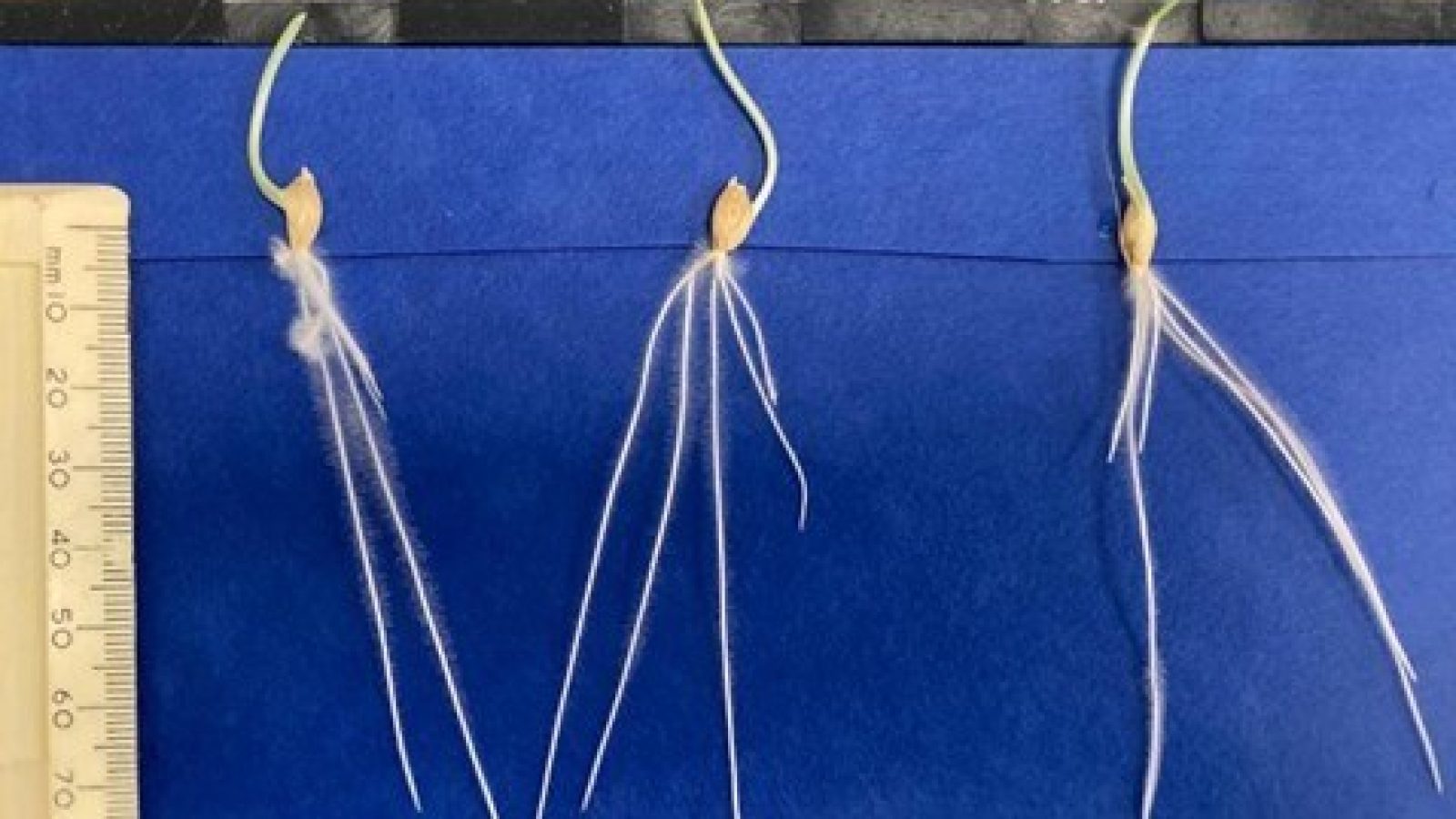Dr Gwendolyn Kirschner, a researcher at The James Hutton Institute, has won a prestigious postdoctoral prize from the Scottish Universities Life Sciences Alliance (SULSA) for her work on the control of root angle in barley.
She is studying gravity signalling that could help plants to access available resources, like water, via their roots.
SULSA has awarded four prizes to outstanding postdoctoral researchers whose work shows excellent potential to make an impact in the field of life sciences, to allow the recipients to raise their profile in Scotland.
The prize aims to support the next generation of life science leaders in Scotland and includes a fully funded tour of three Scottish universities where the awardee will deliver a seminar and meet staff, as well as flexible funding to be used for at their discretion for further career development.
Dr Kirschner said, “The SULSA postdoctoral prize will allow me to visit the universities of the Highlands and Islands, Edinburgh and Glasgow to present my research – an ideal opportunity to meet the plant research community, explore collaborations and learn more about the local resources in Scotland, for example local barley varieties.”
The Hutton is a world leading research institute addressing the issue of global food security by finding scientific solutions for the sustainable management of land and natural resources and the demands for improved agricultural productivity and crop resilience in the face of climate change.

Dr Kirschner’s research asks the question, how do plant stems and branches grow upwards, but roots grow downwards?
It is because plants are able to sense gravity and orient their growth in relation to it. Scientists already know how roots can sense and react to a gravitational stimulus, such as a rotation, but they don’t yet know how roots maintain growth angles over a period of time, and how they maintain angles that are different from vertical.
The seminal roots of barley, the first roots that are established after germination, are an excellent model to study root angle, because all seminal roots have a similar age and similar developmental stage, but they grow at different angles.
Dr Kirschner’s project compares the signalling pathways that take place in roots with different angles to understand if the angle set-point is regulated on the level of gene expression or proteins, and which key players regulate the angle.
The root angle is important because it determines plant root architecture within the soil and thereby the plant’s access to water and nutrients. Roots with a very steep angle are positioned deep in the soil and reach deep-soil water and mobile nutrients such as nitrate, while roots with a more shallow angle cover space at the soil surface and can take up immobile nutrients such as phosphate.
To understand the influence of the root for crop performance, Dr Kirschner uses barley mutants with different root angles, to compare the influence of the root angle on water and nutrient uptake under different soil conditions. In the long term, this knowledge will help to produce crop varieties that are resilient to climate change and that can thrive in low input systems.
With a better understanding of root angle regulation, scientists can improve plant yields by modifying the root system architecture to increase access to water and nutrients in the soil and in response to adverse environmental conditions, such as drought.
Dr Kirschner’s work is part of the research taking place at the Hutton’s International Barley Hub, a centre of excellence linking industry-focussed research with innovation, to deliver immediate impact and ensure the long-term sustainability of the UK and international agriculture, brewing and distilling, food and non-food sectors.